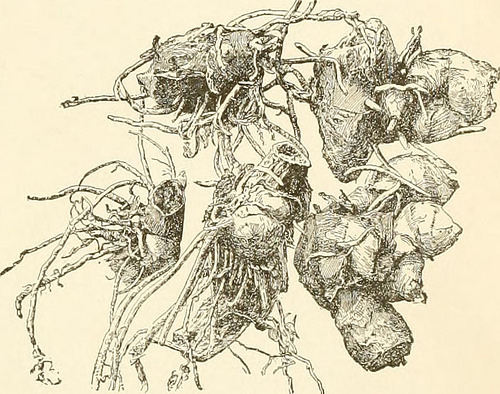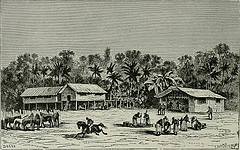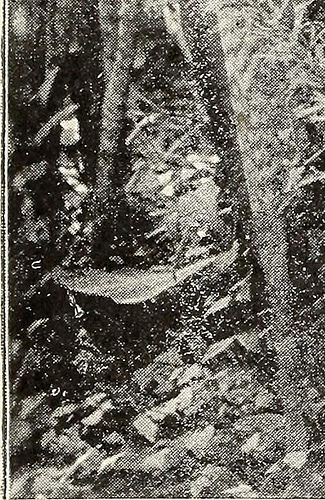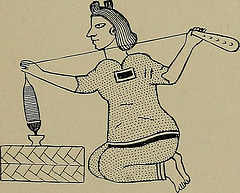Image from page 70 of “The standard cyclopedia of horticulture; a discussion, for the amateur, and the professional and commercial grower, of the kinds, characteristics and methods of cultivation of the species of plants grown in the regions of the United

Image by Internet Archive Book Images
Identifier: standardcycloped02bail
Title: The standard cyclopedia of horticulture; a discussion, for the amateur, and the professional and commercial grower, of the kinds, characteristics and methods of cultivation of the species of plants grown in the regions of the United States and Canada for ornament, for fancy, for fruit and for vegetables; with keys to the natural families and genera, descriptions of the horticultural capabilities of the states and provinces and dependent islands, and sketches of eminent horticulturists
Year: 1916 (1910s)
Authors: Bailey, L. H. (Liberty Hyde), 1858-1954
Subjects: Gardening
Publisher: New York, The Macmillan Co. [etc., etc.]
Contributing Library: UMass Amherst Libraries
Digitizing Sponsor: Boston Library Consortium Member Libraries
View Book Page: Book Viewer
About This Book: Catalog Entry
View All Images: All Images From Book
Click here to view book online to see this illustration in context in a browseable online version of this book.
Text Appearing Before Image:
e at apexor one of them 2-lobed, somewhat twisted, brick-red; hp brick-red: caps, large. S. Amer. L.B.C. 7:634. —C. heliconiifolia, Bouche, Texas to Venezuela, hasthe staminodia more or less connivent: fls. orange-red: Ivs. long-petioled, more or less woolly, oblong-acuminate: plant 7-8 ft. Var. xalapensis, Kriinzl(C. xalapensis, Bouch^), has narrower Ivs. and smallerstature. DD. Staminodia large (.5 in. or less long), united into a tube. E. Fls. pendulous, rose-colored. 24. iridiflora, Ruiz & Pav. St. green, 6-12 ft.: Ivs.broad-oblong, bright green, sHghtly pubescent beneath:racemes paniculate, drooping; fls. large, beautiful rose-color; tube of corolla and staminodia as long as theblade; sepals lanceolate, 1 in. long; corolla-lobes lanceo-late, 21^2 in. long; 3 upper staminodia somewhat longerthan the corolla-lobes, obovate, nearly or quite 1 in.broad, rose-crimson; lip narrow, deeply emarginate,rose-crimson. .•Vndes of Peru. B.M. 1968. B.R. 609.L.B.C. 10:905. R.H. 1861:110.
Text Appearing After Image:
784, Stool of canna, showing how it may be divided. EE. Fls. erect-spreading, white and red.25. liluflora, Warsc. St. robust, green, 8-10 ft.:Ivs. many, oblong, green, 3-4 ft. long, spreading fromthe St. at a right angle: fls. in a corymbose panicle;sepals linear, as long as the tube of the corolla; corolla-lobes lanceolate, 2-3 in. long, jiale green, the tube ofequal length; 3 upper staminodia white, united into atube for half their length, the blade obovate and spread-ing; lip oblanceolate, as long as the staminodia. Colom-bia. R.H. 1884:1.32. F.S. 10:1055-6.—A fine species.The white fls. finally become tinged with brown;lonicera-scented. l jj g CANNABIS (the ancient Greek name). Moracese.Hemp. A widely cultivated fiber plant, and also usedoccasionally as an ornamental subject, being grownfrom seeds and treated as a half-hardy annual. Hemp is dioecious: staminate fls. in axillary panicles,with 5 sepals and 5 drooping stamens and no petals;pistillate fls. in short spikes, with 1 se
Note About Images
Please note that these images are extracted from scanned page images that may have been digitally enhanced for readability – coloration and appearance of these illustrations may not perfectly resemble the original work.





